N,N-DIMETHYL-4-NITROSOANILINE
Synonym(s):4-Nitroso-N,N-dimethylaniline;4-Nitroso-N,N-dimethylaniline;N,N-Dimethyl-4-nitrosoaniline
- CAS NO.:138-89-6
- Empirical Formula: C8H10N2O
- Molecular Weight: 150.18
- MDL number: MFCD00002063
- EINECS: 205-343-1
- SAFETY DATA SHEET (SDS)
- Update Date: 2025-06-13 14:48:16
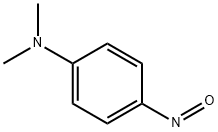
What is N,N-DIMETHYL-4-NITROSOANILINE?
Chemical properties
green crystalline powder
The Uses of N,N-DIMETHYL-4-NITROSOANILINE
manufacture of organic Compounds; accelerator in vulcanizing; in printing fabrics.
Definition
ChEBI: The 4-nitroso derivative of N,N-dimethylaniline.
General Description
A dark green crystalline solid. Insoluble in water. Harmful if ingested.
Air & Water Reactions
Susceptible to spontaneous combustion upon exposure to air. Insoluble in water.
Reactivity Profile
N,N-DIMETHYL-4-NITROSOANILINE has a delayed violent reaction with acetic anhydride.
Health Hazard
Fire will produce irritating, corrosive and/or toxic gases. Inhalation of decomposition products may cause severe injury or death. Contact with substance may cause severe burns to skin and eyes. Runoff from fire control may cause pollution.
Fire Hazard
Flammable/combustible material. May ignite on contact with moist air or moisture. May burn rapidly with flare-burning effect. Some react vigorously or explosively on contact with water. Some may decompose explosively when heated or involved in a fire. May re-ignite after fire is extinguished. Runoff may create fire or explosion hazard. Containers may explode when heated.
Safety Profile
Poison by ingestion. Mutation data reported. Questionable carcinogen with experimental tumorigenicdata. Flammable when exposed to heat, flame, or oxidzers. Violent reaction with acetic anhydride + acetic acid. When heated to decomposition it emits toxic fumes of NOx
Purification Methods
Recrystallise the nitroso-aniline from pet ether or CHCl3/CCl4 and dry it in air. Alternatively suspend it in H2O, heat to boiling and add HCl until it dissolves. Filter, cool and collect the hydrochloride [42344-05-8] with m 177o after recrystallisation from H2O containing a small amount of HCl. The hydrochloride (e.g. 30g) is made into a paste with H2O (100mL) in a separating funnel. Add cold aqueous 2.5 NaOH or Na2CO3 to a pH of ~ 8.0 (green color due to the free base) and extract with toluene, CHCl3 or Et2O. Dry the extract (K2CO3), filter, distil off the solvent, cool the residue and collect the crystalline free base. Recrystallise it as above and dry it in air. [Beilstein 12 IV 1558.]
Properties of N,N-DIMETHYL-4-NITROSOANILINE
| Melting point: | 85-87 °C(lit.) |
| Boiling point: | 271.72°C (rough estimate) |
| Density | 1,15 g/cm3 |
| refractive index | 1.6180 (estimate) |
| storage temp. | Store below +30°C. |
| Water Solubility | Insoluble in water |
| solubility | soluble in Chloroform, Methanol |
| pka | -0.90±0.12(Predicted) |
| form | powder to crystal |
| color | Yellow to Brown to Dark green |
| Merck | 14,6638 |
| BRN | 607293 |
| Stability: | Stable. Incompatible with strong oxidizing agents, strong reducing agents, strong acids, acetic acid, acetic anhydride. Highly flammable |
| CAS DataBase Reference | 138-89-6(CAS DataBase Reference) |
| EPA Substance Registry System | N,N-Dimethyl-p-nitrosoaniline (138-89-6) |
Safety information for N,N-DIMETHYL-4-NITROSOANILINE
| Signal word | Danger |
| Pictogram(s) |
 Flame Flammables GHS02  Skull and Crossbones Acute Toxicity GHS06 |
| GHS Hazard Statements |
H251:Self-heating substances and mixtures H301:Acute toxicity,oral H315:Skin corrosion/irritation H317:Sensitisation, Skin H319:Serious eye damage/eye irritation H335:Specific target organ toxicity, single exposure;Respiratory tract irritation |
| Precautionary Statement Codes |
P235:Keep cool. P280:Wear protective gloves/protective clothing/eye protection/face protection. P302+P352:IF ON SKIN: wash with plenty of soap and water. P305+P351+P338:IF IN EYES: Rinse cautiously with water for several minutes. Remove contact lenses, if present and easy to do. Continuerinsing. |
Computed Descriptors for N,N-DIMETHYL-4-NITROSOANILINE
N,N-DIMETHYL-4-NITROSOANILINE manufacturer
ALPHA CHEMIKA
New Products
4,4-Difluoropiperidine hydrochloride tert-butyl 9-methoxy-3-azaspiro[5.5]undecane-3-carboxylate Indole Methyl Resin N-Isopropylurea N,N-Dicyclohexylcarbodiimide(DCC) MELDRUMS ACID 5-METHYLISOXAZOLE-4-CARBOXYLIC ACID Magnessium Bis glycinate Zinc ascorbate 1-bromo-2-butyne 2-acetamidophenol 9(10H)-anthracenone Erythrosin B, 4-Piperidinopiperidine 2-((4-morpholinophenylamino) (methylthio) methylene) malononitrile 2,4-dihydroxybenzaldehyde 3-(4-morpholinophenylamino)-5-amino-1H-pyrazole-4-carbonitrile Methyl 2-methylquinoline-6-carboxylate 2,6-dichloro-4-nitropyridine 4-Bromo-2-chlorobenzonitrile 2-(benzylamino)acetic acid hydrochloride 4-(tert-Butoxycarbonylamino)but- 2-ynoic acid 3,4-dihydro-2H-benzo[b][1,4]dioxepine 1-Phenyl-1-cycloprppanecarboxylicacidRelated products of tetrahydrofuran
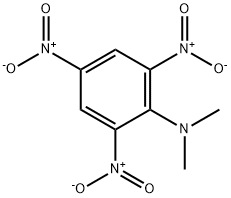

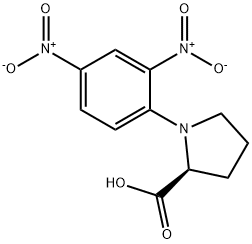
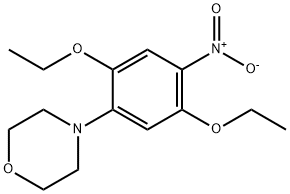
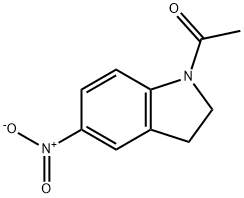

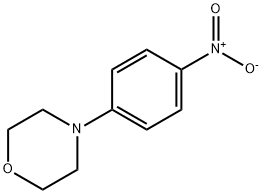
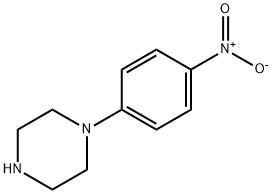
You may like
-
 N,N-Dimethyl-4-nitrosoaniline CAS 138-89-6View Details
N,N-Dimethyl-4-nitrosoaniline CAS 138-89-6View Details
138-89-6 -
 N,N-Dimethyl-4-nitrosoaniline CAS 138-89-6View Details
N,N-Dimethyl-4-nitrosoaniline CAS 138-89-6View Details
138-89-6 -
 3-(4-amino-1-oxoisoindolin-2-yl)-1-methylpiperidine-2,6-dione 98%View Details
3-(4-amino-1-oxoisoindolin-2-yl)-1-methylpiperidine-2,6-dione 98%View Details -
 614-19-7 98%View Details
614-19-7 98%View Details
614-19-7 -
 20677-73-0 (2,2-diethoxyethyl)methylamine 98%View Details
20677-73-0 (2,2-diethoxyethyl)methylamine 98%View Details
20677-73-0 -
 3-(4-(hydroxyamino)-1-oxoisoindolin-2-yl)piperidine-2,6-dione 98%View Details
3-(4-(hydroxyamino)-1-oxoisoindolin-2-yl)piperidine-2,6-dione 98%View Details -
 57381-49-4 2-bromo-4-chlorobenzonitrile 98%View Details
57381-49-4 2-bromo-4-chlorobenzonitrile 98%View Details
57381-49-4 -
 4,6-dichloropyrimidine-5-carbaldehyde 98%View Details
4,6-dichloropyrimidine-5-carbaldehyde 98%View Details
5305-40-8
